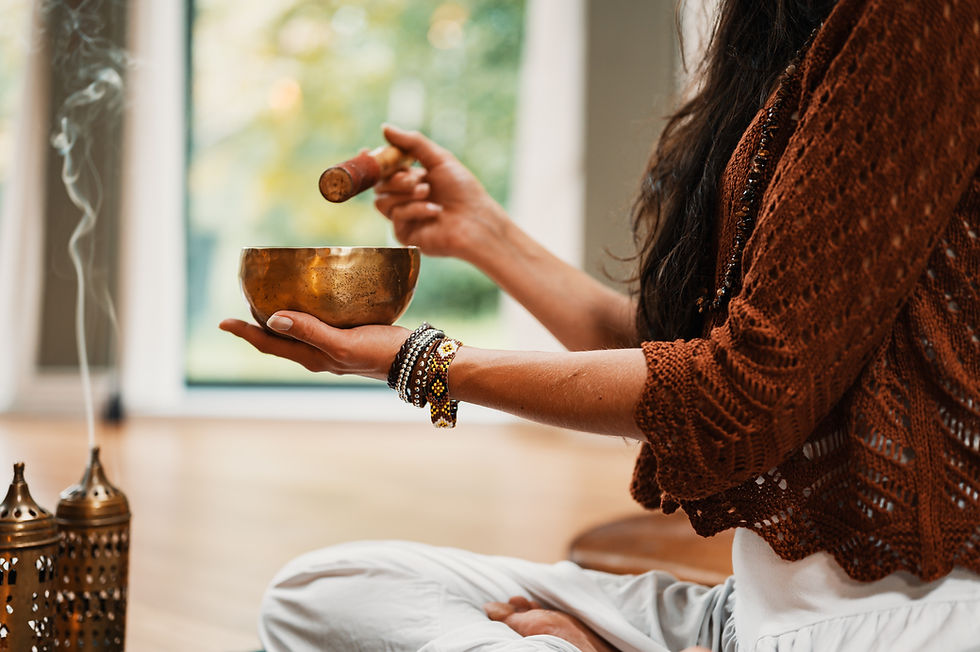What Is Cupping and How Does It Work?
- Dr. Sepi Sefy

- Oct 12, 2022
- 4 min read
Updated: Oct 20, 2022
Cupping is a powerful Traditional Chinese Medicine technique that employs small glass, or plastic cups (or bamboo jars) as suction devices on the body's surface.
The 2016 Summer Olympics in Rio de Janeiro, Brazil, brought Chinese Medicine "cupping" into the spotlight around the world, with elite athletes like Michael Phelps and Alex Naddour providing first-hand examples of cupping's therapeutic use, in this case - for Orthopedic conditions.

Cupping, on the other hand, is used in over 60 countries to treat a much broader range of conditions than orthopedic issues, including infections, insect bites, hypertension, respiratory conditions, skin disorders, digestive problems, and infertility, to name a few. Dr. William Osler, considered the "Father of Modern Medicine" and one of the founders of Johns Hopkins Hospital, recommended cupping for bronchopneumonia and acute myelitis in the early 1900s (1).
THE SCIENCE BEHIND CUPPING THERAPY
There are several theories about the mechanisms of cupping. Because our skin is well vascularized - that is, it has a plentiful blood supply - the applied suction from the cups has been found to increase circulation by dilating capillaries, causing them to promote lymphatic circulation, regulate the immune system, and control inflammatory processes in the body (2, 3).
Overall, there are over 1000+ clinical studies on cupping, including large scale Randomized Controlled Trials (RCT), all of which show cupping to be a very safe and powerful non-pharmacological approach (1, 4, 5).

WHAT IS CUPPING AND HOW DOES IT WORK?
Chinese Medicine "Cups" are typically made of glass (sometimes bamboo). Suction is created by applying heat to the interior of the cup and quickly placing the cup on the body's surface. The suction is caused by the trapped heat in the cup's belly.
The suction from the cup works to disperse and break up stagnant blood, body fluids, or phlegm congestion. The procedure draws clogged blood and body fluids to the skin's surface. After the suction between the cup and your body is established, the cups are gently moved across the surface of your skin (a technique known as "moving cup therapy"). Medical massage oils or lotions are sometimes used to improve the gliding movement of the glass cups along the skin.
The suction in the cups causes the skin and superficial muscle layer to be lightly drawn into the cup. Cupping is similar to massage in that, rather than applying pressure to muscles, it uses gentle pressure to pull them upward.
For the majority of patients, this is a particularly relaxing and relieving sensation.
Once suctioned, the cups are usually left in place for a short period of time while the patient rests. Many patients find the process deeply relaxing, and some even fall asleep during treatment. In general, cupping is used as part of an overall Traditional Chinese Medicine treatment, so the patient may be receiving heat therapies, herbal medicine, and/or other therapies at the same time.
WHAT ARE THESE FUNNY CIRCLES (PETECHIAE) AFTER CUPPING?
Cupping, as seen in the above photo, causes a residual redness on the skin's surface. Petechiae is a therapeutic response to the treatment that usually fades within 24 - 48 hours. It is not painful or tender, and it should have no impact on your daily life.

CUPPING IS A TREATMENT AND SHOULD BE APPLIED AS SUCH.
With the mainstream acceptance of Chinese Medicine cupping therapy, people are increasingly calling us to request "cupping sessions." As trained Chinese Medicine Practitioners, we are happy to use cupping when it is appropriate.
To determine whether cupping therapy is the right treatment for you, your Practitioner must conduct a thorough Health History Intake and Physical Assessment. There are medical precautions to be taken with patients who have blood-clotting disorders, are on certain medications, have certain medical conditions, or are very debilitated. Cupping therapies should only be used by a properly trained Practitioner, with properly sterilized cups, and with all required medical safety protocols in place.
Do you want to see if cupping could help you?
Cupping therapy is typically used in conjunction with herbal medicine and other natural medicine treatments, but it can also be used on its own. It is necessary for your Practitioner to have a complete medical and health history of the patient in order to determine the most appropriate and effective treatment. In general, patients find it to be a very effective treatment - and an overall relaxing experience, with some even falling asleep during their session.
If you are curious and would like to learn more, please contact us at 083 045 6141.

By Dr. Sepi Sefy PhD whom specialises in Herbal Medicine of Ayurveda, Traditional Chinese & Western Herbal Medicine, alongside of Yoga, Nutrition and Phytotherapy.
Sources:
1. Osler, W. The Principles and Practice of Medicine. 11th rev. ed. New York, NY: Appleton; 1931;112 , 981.
2. Samadi M., Kave M., Mirghanizadeh S. Study of cupping and its role on the immune system. J Relig Health. 2013;1:59–65.
3. Ahmadi, A., Schwebel, D.C., Rezaei, M. The efficacy of wet- cupping in the treatment of tension and migraine headache. Am. J. Chin. Med.2008; 36, 37e44.
4. Zhao, X.X., Tong, B.Y., Wang, X.X., Sun, G.L. Effect of time and pressure factors on the cupping mark color. Zhongguo Zhen Jiu 2009;29 (5), 385e388.
5. Cao, H., Han, M., Li, X., et al. Clinical research evidence of cupping therapy in China: a systematic literature review. BMC Complementary and Alternative Medicine. 2010;10:70. doi:10.1186/1472-6882-10-70.
6. Cao, H., Zhu, C., Liu, J. Wet cupping therapy for treatment of herpes zoster: a systematic review of randomized controlled trials. Alternative therapies in health and medicine. 2010;16(6):48-54.*Figure excerpted from Reference 5, published in PubMed Central.



Comments